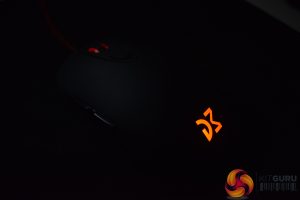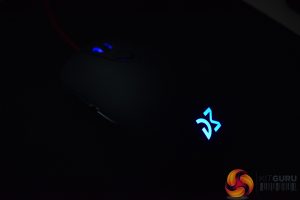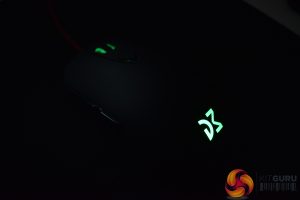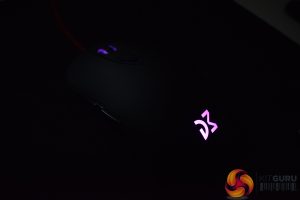To test the DM1 Pro S, I used the mouse as my daily driver for one week. During this time I used it for playing games, editing photos and general office tasks.
Instead, the only aspect of the mouse that can be tinkered with is DPI. The mouse has 6 different stages users can choose from – the default values are 400, 800, 1600, 2400, 4800, 12000. As you switch between the stages, the mouse's LED lighting changes to reflect what stage you are currently using – for example, 400 DPI is red, 800 DPI is blue, 1600 is green. These settings can be adjusted using software, it is just not very clear that the DM1 Pro S actually supports any software from a look at the product page.
In any case, the mouse works fine right out of the box – you'll just want the software if you want a bit more control over the DPI stages and lighting.
The first of those strengths is the shape and general build. If you've not used a Sensei-style mouse before, it quickly becomes apparent that there is a reason why this design is so popular – it is just very comfortable. The bulbous bottom end fills up my palm nicely, while the symmetrical inward curve keeps my thumb and fourth-finger positioned on the mouse's sides at all times. It is very easy to use palm, claw or fingertip grips as well, whatever your preference.
For a mouse weighing just 85g, too, the DM1 Pro S feels robust enough that it could withstand a few knocks. It's all plastic, so I wouldn't go crazy, but it doesn't feel flimsy. My sample also exhibited no noticeable rattling, either, be it from the scroll wheel or elsewhere.
I'm not too sure about the soft-touch finish to the mouse, though. While it feels lovely to the touch, I could easily understand if some users found it to be a bit slippery as the finish is very smooth. Personally I had no issues gripping the mouse, so I can't complain there, but it is worth mentioning.
Another big selling point for the DM1 Pro S is the PMW 3360 sensor. This is considering the best sensor around (not including the various modified 3360s that the likes of Razer and Logitech use) and it shows – tracking pixel by pixel was handled without a hitch, and I did not spot any unwanted acceleration or smoothing while gaming or editing my review photos.
In terms of lift-off distance (LOD), Dream Machines quotes LOD to be 1.8-2.0 mm, and I'd say that's perhaps a slight underestimate but not wildly wrong. In my testing, using my cloth mousepad, the DM1 Pro S stopped tracking once I'd placed two DVDs underneath it, and that's quite standard for a gaming mouse.
Coming to the buttons, all three of the LMB, RMB and scroll wheel use Omron switches rated for 20 million clicks and that's good to see. Both primary buttons feel snappy and fairly tight with no pre-travel before each click – they're not the fastest I've ever used, but they are nice and tactile and of overall good quality.
The scroll wheel is more of a disappointment, however, with very soft steps which makes scrolling feel quite mushy. Clicking down on the wheel, too, doesn't give a give satisfactory felling – it is again quite loose and soft.
Unfortunately, more of the same can be said for the side buttons. Unlike the primary mouse buttons, these side buttons are not very tight or snappy. Instead, they feel loose and mushy, with no real tactility or ‘punchiness' to each click. On top of that, I found the buttons themselves would wobble slightly if I made a few, quick presses in a row and that was quite distracting.
Lastly, the braided cable. Sadly, it is also quite poor as it is just incredibly stiff and inflexible, causing it to frequently drag across my mousepad. Dream Machines says it made the decision to braid the cable for the sake of durability, and that's fair enough, but the implementation has got to be better. Razer includes braided cables for the vast majority of its mice and they are excellent – thin, light and very flexible. Dream Machines has to learn from that, as the DM1 Pro S' cable really mars the overall experience of using the mouse.
 KitGuru KitGuru.net – Tech News | Hardware News | Hardware Reviews | IOS | Mobile | Gaming | Graphics Cards
KitGuru KitGuru.net – Tech News | Hardware News | Hardware Reviews | IOS | Mobile | Gaming | Graphics Cards






